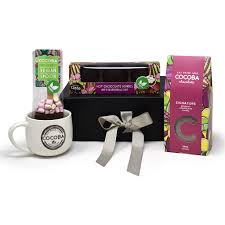Top Valentine’s Day Gifts for Her: Show Your Love and Appreciation
Valentine’s Day Gifts for Her
Valentine’s Day is the perfect opportunity to show the special woman in your life how much you care. Whether it’s your girlfriend, wife, mother, or friend, a thoughtful gift can convey your love and appreciation. Here are some ideas to help you choose the perfect Valentine’s Day gift for her:
Romantic Dinner
Surprise her with a romantic dinner at her favourite restaurant or cook a special meal at home. Set the mood with candles and soft music for a memorable evening together.
Personalised Jewellery
A piece of personalised jewellery, such as a necklace with her initials or a bracelet with a meaningful charm, can make a heartfelt gift that she will cherish.
Spa Gift Set
Treat her to a luxurious spa gift set so she can pamper herself at home. Include bath bombs, scented candles, and skincare products for a relaxing spa experience.
Floral Bouquet
A beautiful bouquet of her favourite flowers is always a classic choice for Valentine’s Day. Add a personal note to express your love and admiration.
Weekend Getaway
Plan a romantic weekend getaway to escape the daily routine and create lasting memories together. Choose a destination that she has always wanted to visit or revisit a special place that holds significance for both of you.
Remember, it’s the thought and effort you put into choosing the gift that matters most. Show her how much she means to you this Valentine’s Day with a thoughtful and meaningful present.
7 Reasons Why Valentine’s Day Gifts Are Perfect for Her: Celebrating Love and Thoughtfulness
- 1. Express your love and appreciation in a thoughtful way.
- 2. Strengthen your bond and create lasting memories.
- 3. Show her that she is special and deserving of a heartfelt gift.
- 4. Surprise her with a romantic gesture that brightens her day.
- 5. Choose from a variety of options to suit her preferences and interests.
- 6. Demonstrate your thoughtfulness and attention to detail.
- 7. Celebrate the spirit of love and romance with a meaningful gift.
Seven Drawbacks of Valentine’s Day Gifts for Her: Navigating Stress, Cost, and Expectations
- 1. Pressure to find the perfect gift may cause stress and anxiety.
- 2. Some women may not appreciate traditional romantic gifts like flowers and chocolates.
- 3. Costly gifts can strain your budget, leading to financial stress.
- 4. Choosing the wrong gift may lead to disappointment or hurt feelings.
- 5. Gifts that are too personal or intimate may create awkward situations.
- 6. Over-commercialisation of Valentine’s Day can make genuine gestures feel insincere.
- 7. Cultural differences or individual preferences may affect the appropriateness of certain gifts.
1. Express your love and appreciation in a thoughtful way.
Valentine’s Day gifts for her offer a wonderful opportunity to express your love and appreciation in a thoughtful and meaningful way. By carefully selecting a gift that resonates with her preferences and interests, you can show her just how much she means to you. Whether it’s a personalised piece of jewellery, a romantic dinner date, or a spa gift set for relaxation, the thought and effort put into choosing the perfect gift convey your deep affection and gratitude. This gesture not only strengthens your bond but also creates lasting memories that she will cherish for years to come.
2. Strengthen your bond and create lasting memories.
Valentine’s Day gifts for her can strengthen your bond and create lasting memories. By choosing a thoughtful and meaningful gift, you show her that you care and value your relationship. The act of giving a gift on this special day can deepen your connection and create shared moments that you both will cherish for years to come. Whether it’s a romantic dinner, a weekend getaway, or a personalised token of affection, the gift you choose has the power to strengthen your bond and create beautiful memories that will last a lifetime.
3. Show her that she is special and deserving of a heartfelt gift.
Valentine’s Day gifts for her offer a wonderful opportunity to express appreciation and affection towards the special woman in your life. By presenting her with a thoughtful gift on this occasion, you demonstrate that she holds a unique place in your heart and that she is truly deserving of something meaningful and heartfelt. This gesture not only shows her how much she is cherished but also reinforces the bond and connection you share, making her feel valued and loved in a profound way.
4. Surprise her with a romantic gesture that brightens her day.
Surprising her with a romantic gesture that brightens her day is a wonderful way to show your love and appreciation on Valentine’s Day. Whether it’s a heartfelt handwritten note, a spontaneous bouquet of flowers, or a thoughtful gift that reflects her interests, these gestures can bring joy and warmth to her heart. The element of surprise adds an extra touch of magic to the occasion, making her feel cherished and special. By taking the time to plan a delightful surprise, you not only create lasting memories but also strengthen the bond between you and make her feel truly loved.
5. Choose from a variety of options to suit her preferences and interests.
When selecting Valentine’s Day gifts for her, one significant advantage is the ability to choose from a diverse range of options that cater to her unique preferences and interests. Whether she enjoys luxurious spa experiences, personalised jewellery, romantic gestures like a candlelit dinner, or adventurous getaways, there is a gift perfectly suited to delight and resonate with her individual tastes. This variety ensures that you can select a present that reflects her personality and shows how much you value and understand her.
6. Demonstrate your thoughtfulness and attention to detail.
Valentine’s Day gifts for her provide a wonderful opportunity to demonstrate your thoughtfulness and attention to detail. By selecting a gift that reflects her interests, preferences, or a special memory you share, you show that you have put time and effort into choosing something meaningful. This thoughtful gesture not only makes the gift more personal but also conveys your deep understanding of her, strengthening the emotional connection between you both. Whether it’s a customised piece of jewellery, a surprise experience, or a carefully curated gift box, showing your attention to detail through your choice of present can truly make her feel loved and appreciated on this special day.
7. Celebrate the spirit of love and romance with a meaningful gift.
Embrace the essence of love and romance by presenting a meaningful gift this Valentine’s Day. Celebrating the spirit of affection and connection, a thoughtful gesture can convey heartfelt emotions and strengthen the bond between you and your special woman. Whether it’s a personalised keepsake, a romantic experience, or a token of appreciation, the act of giving reflects your deep admiration and care for her. Let your chosen gift symbolise the beauty of your relationship and ignite the flames of love on this special day dedicated to cherishing each other.
1. Pressure to find the perfect gift may cause stress and anxiety.
One significant drawback of Valentine’s Day gifts for her is the pressure to find the perfect gift, which can lead to stress and anxiety. The expectation to present a thoughtful and meaningful gift that accurately conveys your love and appreciation can be overwhelming. This pressure may cause individuals to second-guess their choices, spend excessive time searching for the ideal gift, or feel anxious about whether their chosen gift will be well-received. As a result, the joy of celebrating love on Valentine’s Day may be overshadowed by the stress of meeting expectations and finding the elusive “perfect” gift.
2. Some women may not appreciate traditional romantic gifts like flowers and chocolates.
Some women may not appreciate traditional romantic gifts like flowers and chocolates. While these gifts are popular choices for Valentine’s Day, it’s essential to consider individual preferences and tastes. Some women may prefer practical gifts or experiences over traditional romantic gestures. It’s important to understand what your partner values and tailor the gift accordingly to ensure that it resonates with her on a personal level. By taking the time to consider her preferences, you can show thoughtfulness and consideration in selecting a gift that truly reflects her unique personality and interests.
3. Costly gifts can strain your budget, leading to financial stress.
One significant downside of Valentine’s Day gifts for her is the potential financial strain that costly gifts can impose on your budget. Splurging on expensive presents in an attempt to express your love and appreciation may lead to financial stress and anxiety. Overspending on gifts can disrupt your financial stability, causing concerns about meeting other essential expenses or saving for the future. It’s essential to consider your financial situation and set a budget that aligns with your means to avoid unnecessary strain on your finances during this romantic occasion.
4. Choosing the wrong gift may lead to disappointment or hurt feelings.
One significant drawback of selecting Valentine’s Day gifts for her is the potential for disappointment or hurt feelings if the wrong gift is chosen. It’s essential to consider her preferences, tastes, and interests when selecting a gift to ensure that it resonates with her. Failing to choose a thoughtful or suitable gift may inadvertently convey a message of insensitivity or lack of understanding, which can result in feelings of disappointment or hurt. Taking the time to select a gift that reflects your appreciation and love for her can help avoid this con and ensure a meaningful Valentine’s Day celebration.
5. Gifts that are too personal or intimate may create awkward situations.
When selecting Valentine’s Day gifts for her, it’s crucial to strike a balance and avoid gifts that are overly personal or intimate. While the intention may be to show affection, such gifts have the potential to create awkward situations. It’s important to consider her comfort level and boundaries when choosing a gift, ensuring that it is thoughtful and appropriate for the stage of your relationship. Opting for gifts that are romantic yet respectful can help maintain a positive and comfortable atmosphere on Valentine’s Day.
6. Over-commercialisation of Valentine’s Day can make genuine gestures feel insincere.
The over-commercialisation of Valentine’s Day can sometimes overshadow the genuine sentiments behind the gifts given to her. With the pressure to buy extravagant presents and the bombardment of marketing campaigns promoting materialistic expressions of love, sincere gestures can be perceived as insincere or lacking authenticity. The focus on expensive gifts and grand gestures may detract from the true essence of Valentine’s Day, which is about celebrating love in its purest form. It is important to remember that heartfelt gestures, no matter how simple, hold more value than extravagant displays driven by commercial interests.
7. Cultural differences or individual preferences may affect the appropriateness of certain gifts.
When selecting Valentine’s Day gifts for her, it’s essential to consider that cultural differences or individual preferences can impact the suitability of certain gifts. What may be perceived as romantic or thoughtful in one culture may not resonate the same way in another. Additionally, each person has unique tastes and preferences, so it’s crucial to choose a gift that aligns with her personality and values. Being mindful of these differences ensures that the gift you select is well-received and appreciated, reflecting your understanding and respect for her individuality.









